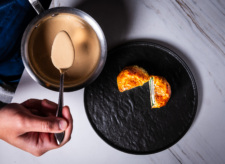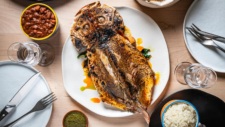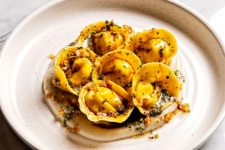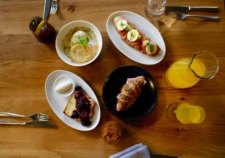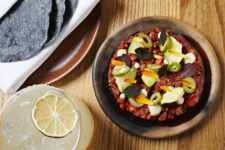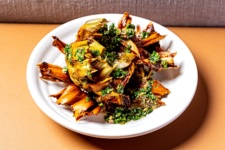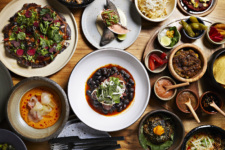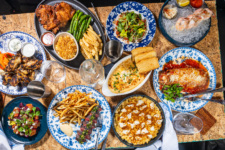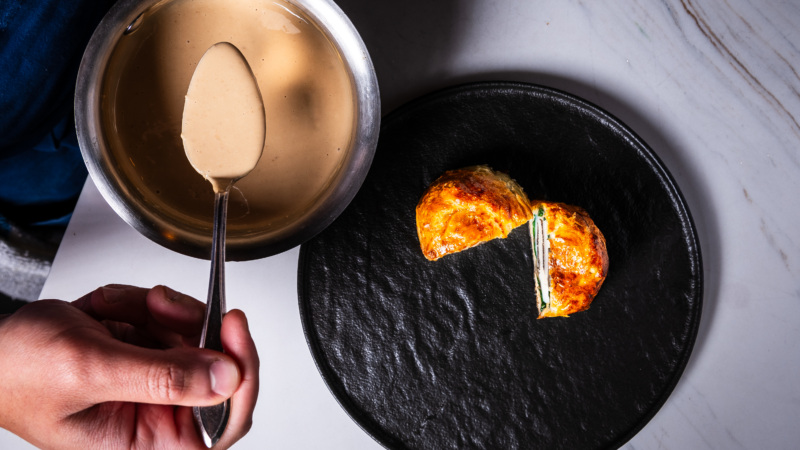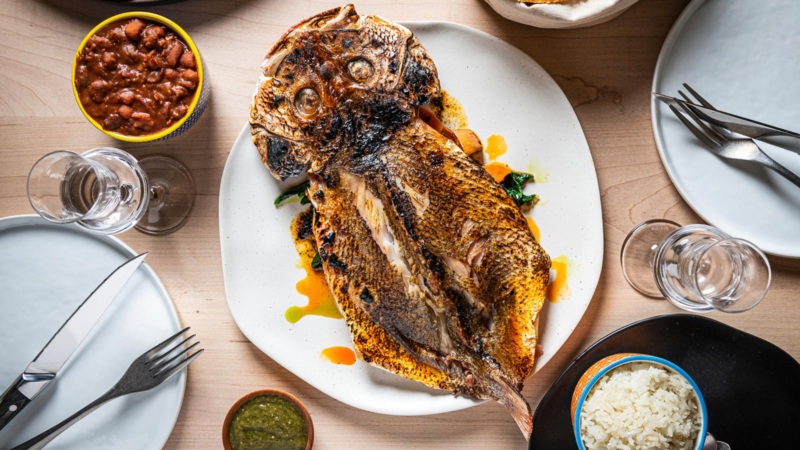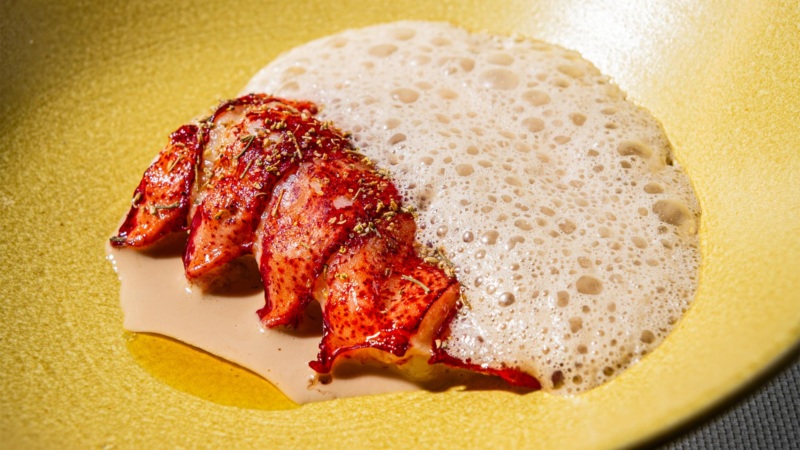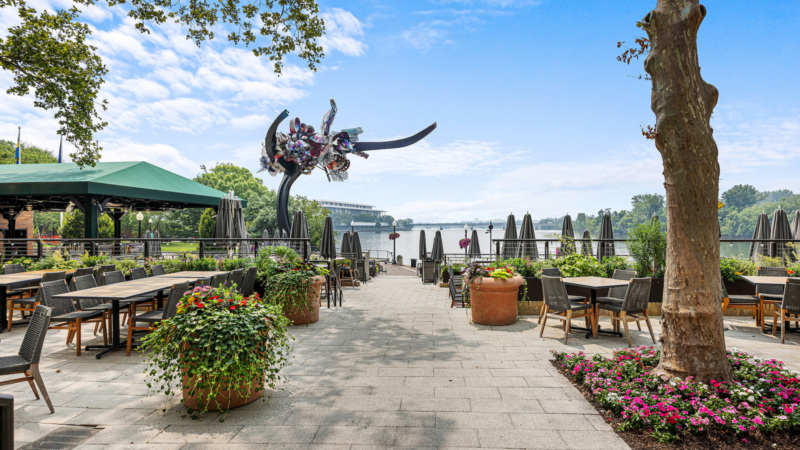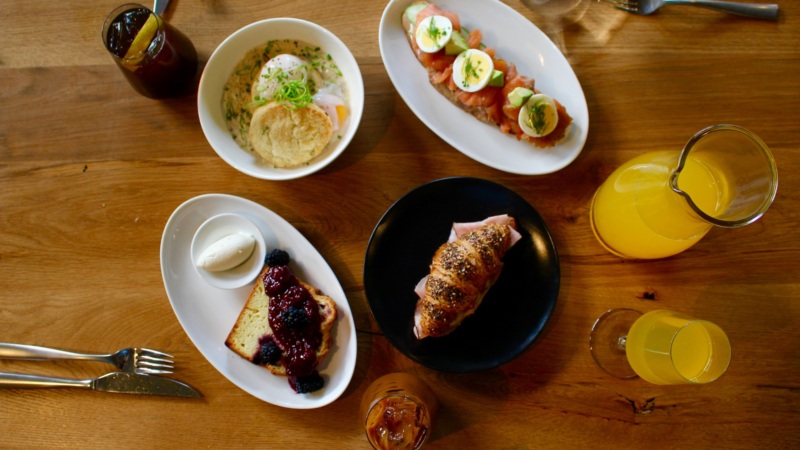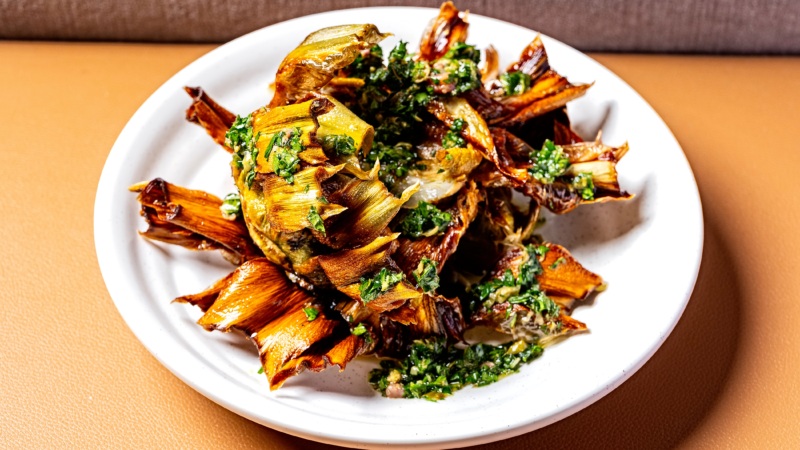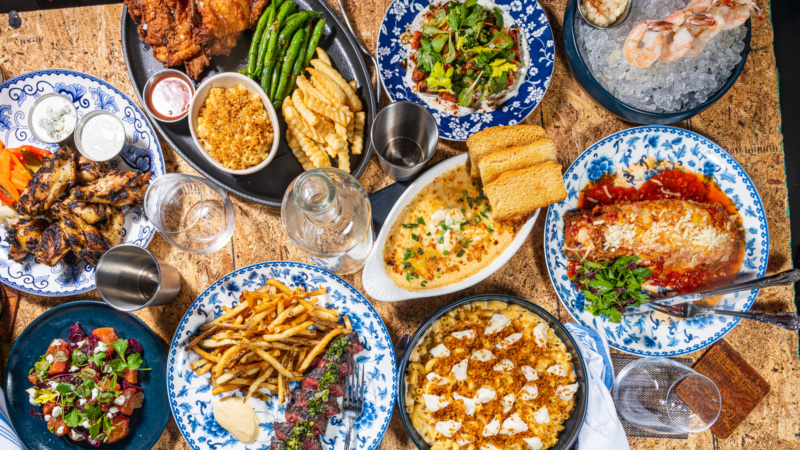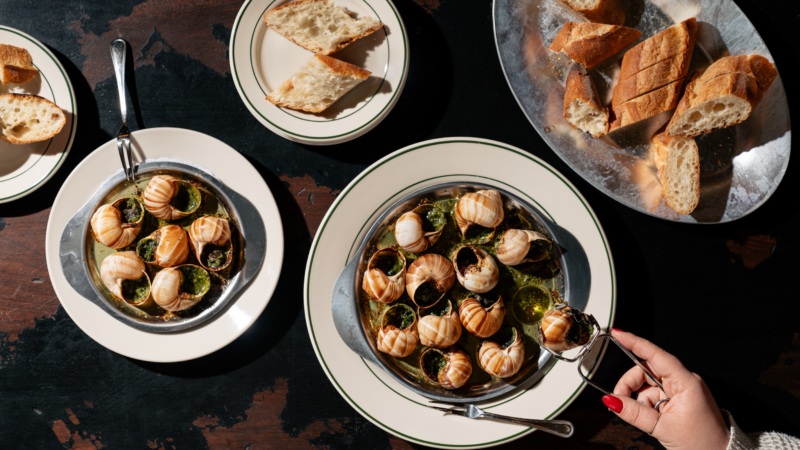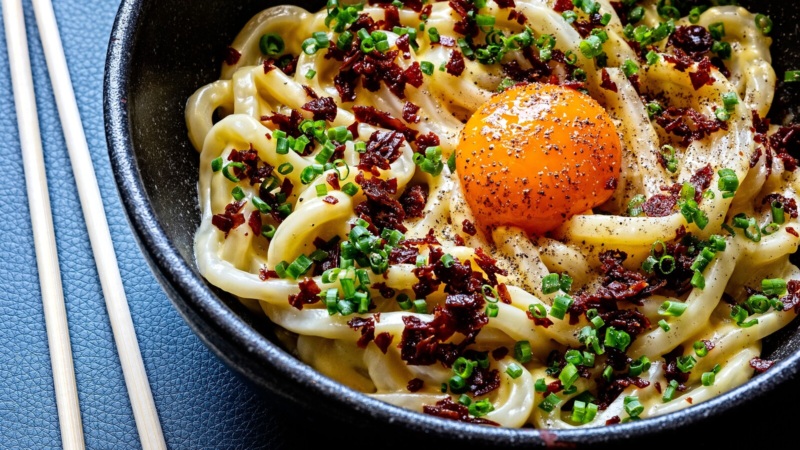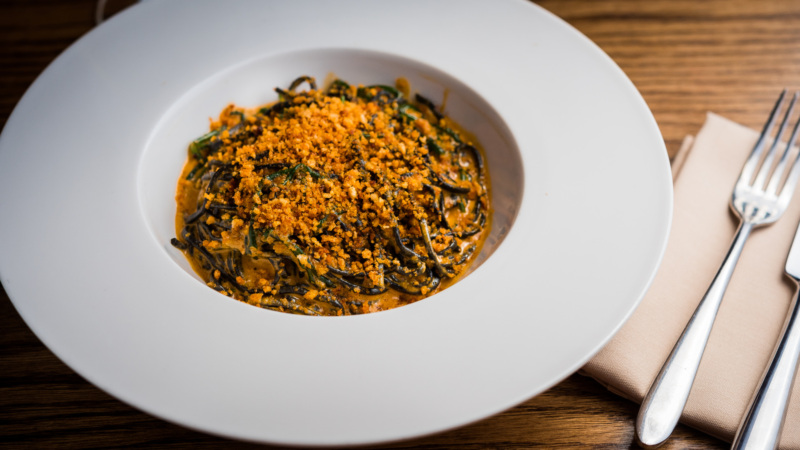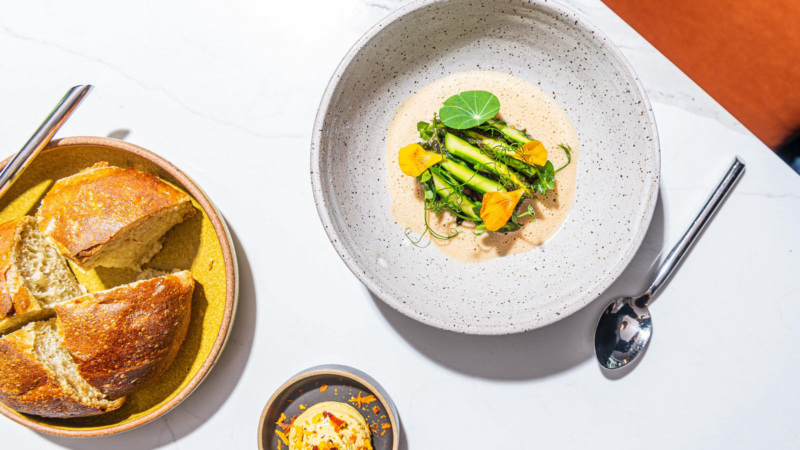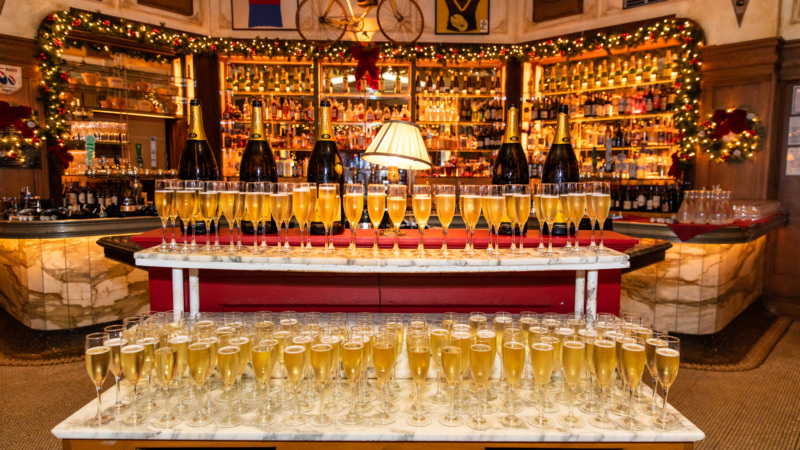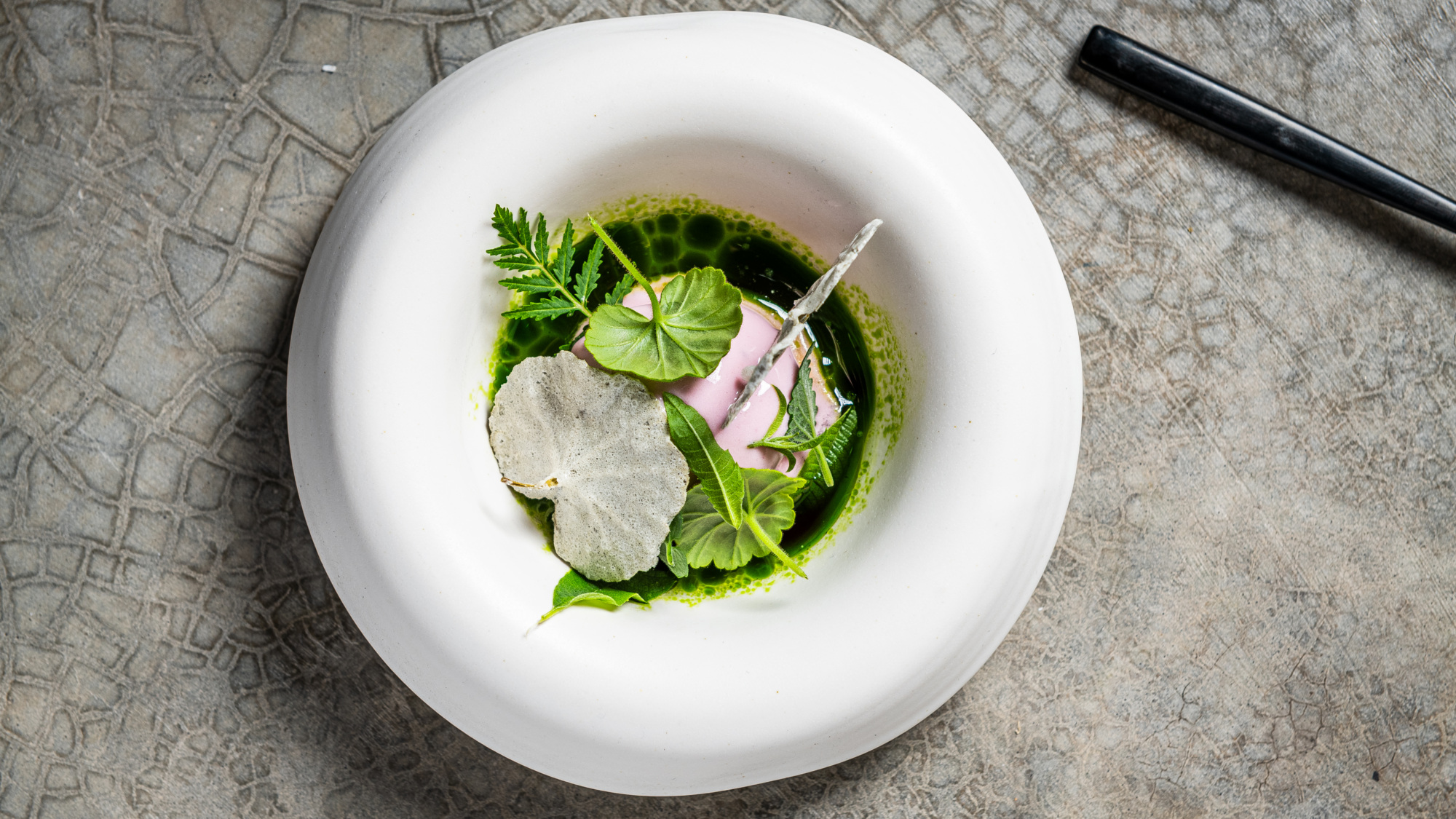
Everything You Need to Know About the Return of Johnny Spero’s Reverie
Chef Johnny Spero is back, reopening his tasting menu restaurant Reverie in an unassuming Georgetown alleyway more than a year after closing from a tragic fire. Shortly after winning its first Michelin star, Reverie caught fire in August 2022 and Spero lost some of his most prized culinary possessions in the blaze, including his recipe notebooks from his time working at Mugaritz and Noma.
It’s been a long road to reopen Reverie, but Spero was also busy opening Bar Spero, and taking Reverie on the road with pop-ups around California at Bell’s in Los Alamos; Saison in San Francisco; and Commis in Oakland. He even took Reverie around the world to Kyoto, Seoul, and beyond (Maine, for instance), drawing inspiration for his new Reverie 2.0 menu along the way.
“It’s a new chapter for us,” Spero says. “The fire gave us a chance to restart. The spirit of Reverie was always there but we’re opening what Reverie should have been the first time around, so it was a blessing in disguise.”
Here’s everything you need to know about one of Washington D.C.’s most anticipated chef-driven openings — make that reopenings — this year. Reverie’s doors reopen on March 26, with reservations accepted March 15.
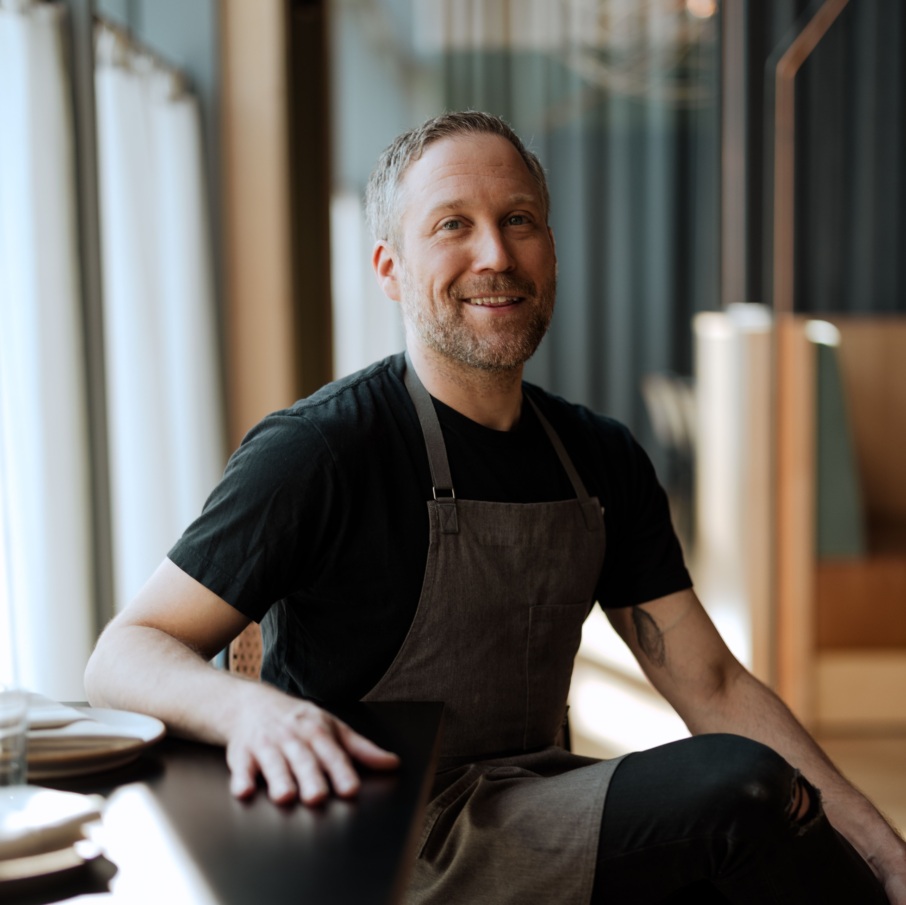
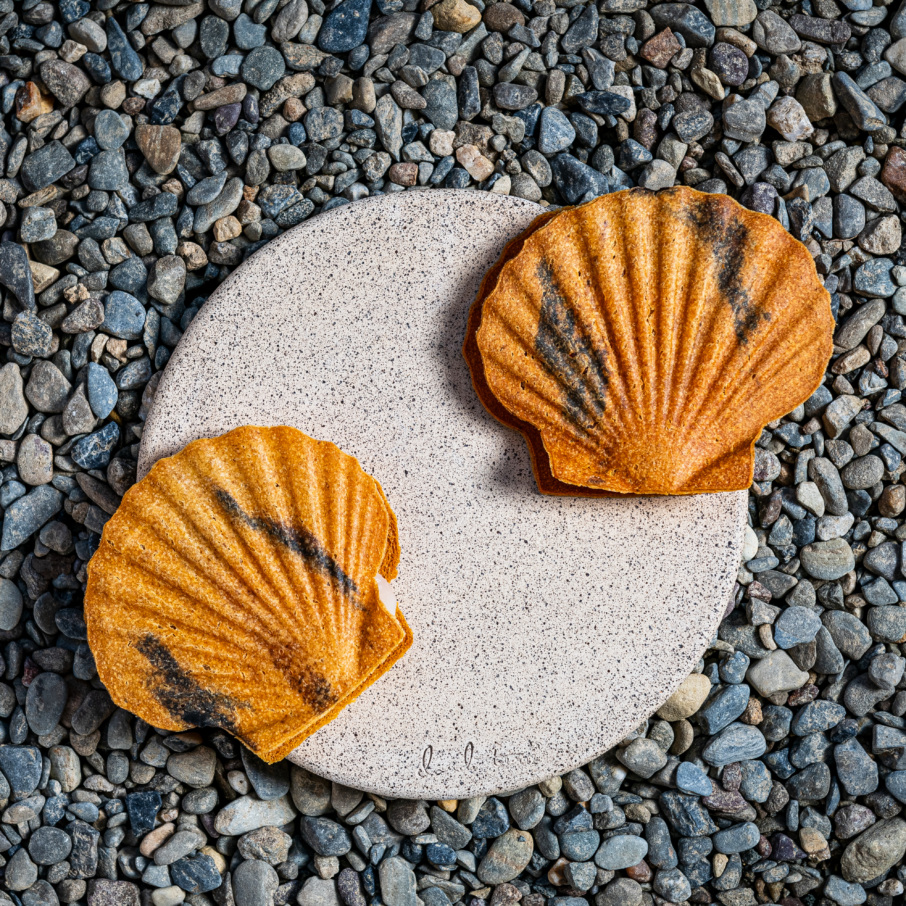
1. Same space, fewer seats.
Reverie is still in its original 2,000-square-foot space, but instead of squeezing 70 seats in at a bar, kitchen counter, and dining room, Spero will have just 12 tables in the dining room, for a maximum of 36 seats. “The seat count will be significantly different,” he says. “But every table will be looking into the kitchen. The open kitchen is still 100% our focus.” There’s a lot of natural light, light white oak, and Scandinavian and Japanese design influences.
“From a design aesthetic, we couldn’t make it any bigger” and still keep it intimate, he says. While the original restaurant was wrapped in blue and white tiles, it’s now it’s a bit darker and moodier, with beautiful granite stone countertops that wrap the entire kitchen and server stations.
Spero also uses the shou sugi ban Japanese technique of preserving wood by charring it with fire for the walls. “Fire can preserve and not just destroy,” he says. “The fire did wreak havoc on the restaurant, but it preserved its spirit and intent.”
2. Cooks will be serving guests.
“Who’s going to describe the food better, the cook who’s been prepping the entire day, or the server?” Spero asks. “It’s challenging to find cooks who will want to talk to guests, but we don’t take ourselves too seriously. It’s not polished or robotic, or reading off a script. People can be themselves and talk to the guests. It strips down the barrier around a preconceived fine dining experience.”
Guests will watch cooks prepare, and then deliver, every dish. But when it comes to drinks, the front of the house will have a chance to shine.
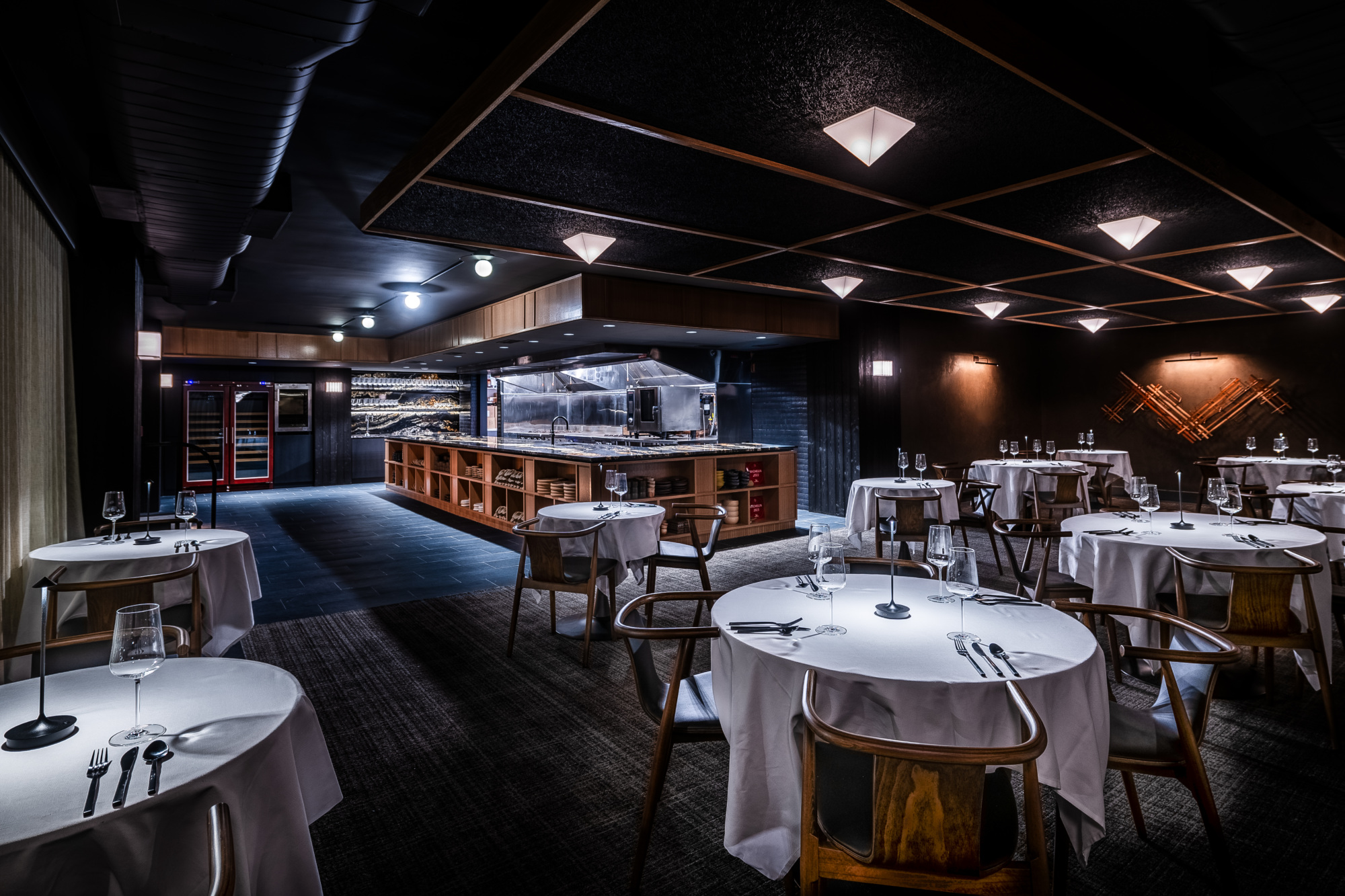
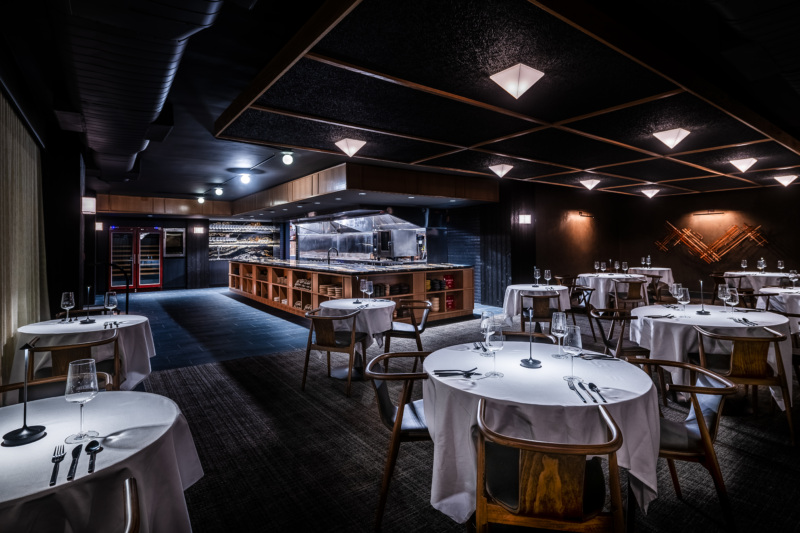
3. Drinks, of all sorts, will be a big part of the new Reverie.
“We’re really trying to push our beverage program a little bit more,” Spero says. “We never had captains and floor somms before.” Now the restaurant has a dedicated wine fridge and more suitable space for a higher-end approach to wine and cocktail service — and a front-of-house team that will focus on the broader strokes of hospitality.
Wine pairings will be a focus, along with a non-alcoholic pairing that includes bottles from NON, Unified Ferments, and Jörg Geiger selections, plus housemade mocktails.
“If you want a wine pairing but with some NA options thrown in, we can do that too,” Spero says. “It gives people some flexibility. If we put that much effort into the meal, I think being able to tell the story from both a food and beverage standpoint is really great. And having guests remember it is even better. I think we’re intentional with the amount of food and booze we’ll serve too so you can still enjoy it.”
4. No. Red. Meat. (But plenty of seafood and vegetables.)
“[It’s] more of a personal decision,” Spero says. “I’ve changed my diet up a lot. Reverie is my story and I’ve determined the voice that it will have. It’s definitely intentional.”
Spero has tried being vegan to better understand the concept, and he quit smoking and drinking years ago. He now has three kids with his wife, Alexis. “There’s a shift when you start recognizing what you’re putting in your body. We went plant-based during the pandemic and this is the food that I like to cook and the food that I like to eat. Reverie is one of my buckets that I get to fill … it’s my love of seafood and growing up on the East Coast. Most of our seafood comes from the mid-Atlantic up to New England so I’m trying to highlight the great seafood we have on the East Coast.” For example, sea urchin and freshwater eel from Maine, cod, and bluefin tuna.
Don’t worry. If you’re craving crispy squab or a burger, you can still find that on the menu at Bar Spero.

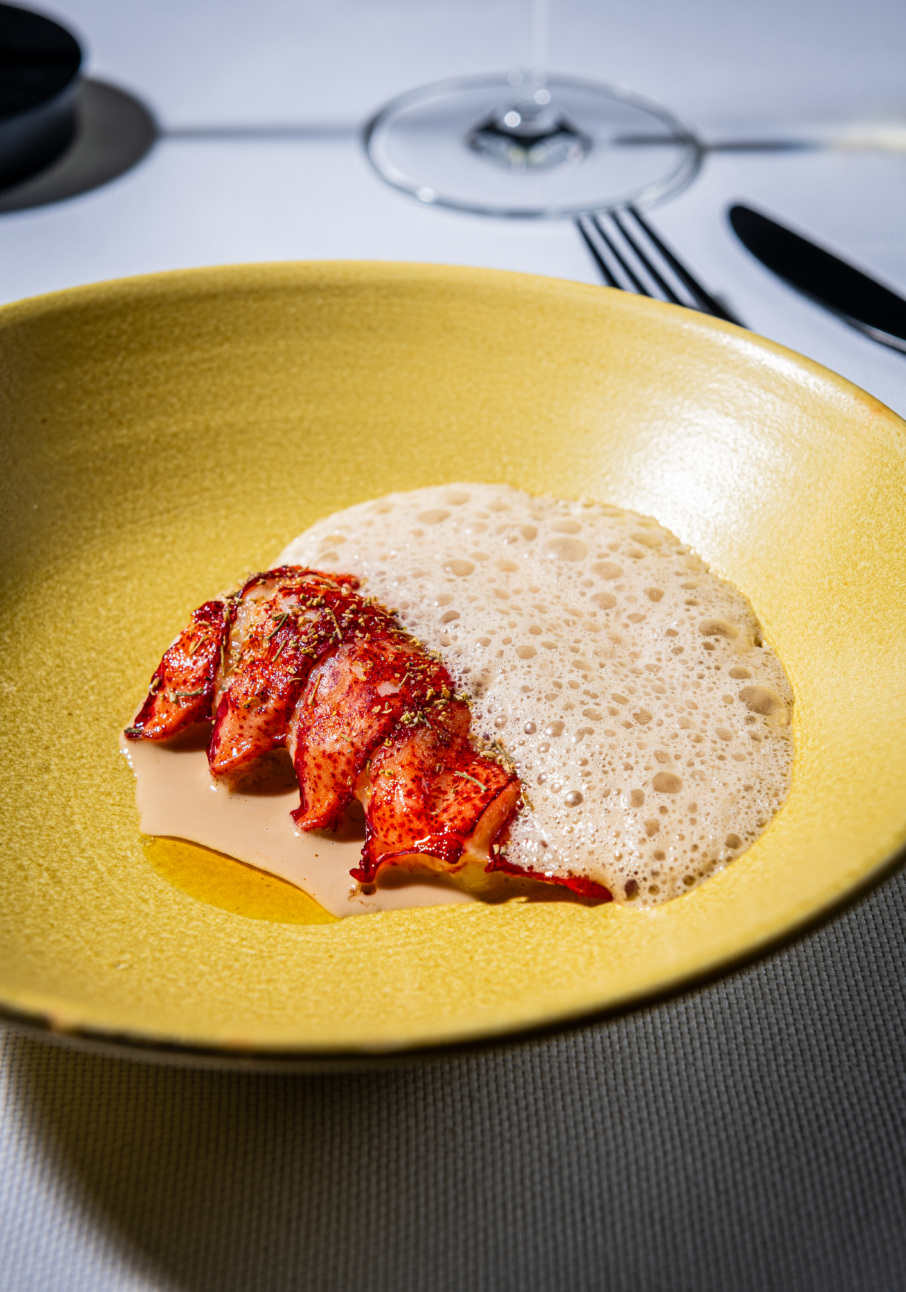
5. No supplements — the tasting menu is the tasting menu.
Spero is still finalizing his opening menu but says he’ll land at around 10 to 14 courses for $255, including small bites at the beginning. Ultimately, he opted against the supplements that many tasting menu restaurants offer. “If we want to have a supplement course, we’ll just build that into our menu,” he says. “We wanted to make it as simple as possible from a guest facing perspective.”
6. Only a couple of dishes — both with rice — will be familiar.
Spero says only two dishes will be recognizable by guests who have dined at Reverie before. First, an Anson Mills Carolina Gold rice dish with seafood and an egg yolk sauce. “It’s comforting and warm,” Spero says. “It’s complicated on the backend but from a guest perspective it’s really easy to enjoy. There’s a veil of simplicity draped over this wildly complex food.”
The second rice dish is a fancy rice pudding for dessert. “It’s always served slightly warm, but we adjust the temperature depending on the time of year,” Spero says. “We cook koshihikari short-grain Japanese rice in a coconut with coconut water, buried in embers, so it’s smoky and sweet.” He tops that with a curry-leaf crème anglaise. “These rice dishes became symbols of comfort on our menu so we wanted to keep those.”
I’ve changed my diet up a lot. Reverie is my story and I’ve determined the voice that it will have.— Johnny Spero, chef
7. For Spero, there’s no place like home.
“There’s a lot of eyes on us because we did that world tour,” Spero says. “It’s pressure but it’s a good pressure. People have been waiting for us to reopen and they want to celebrate with us. It was kind of cool that we could take the ethos of Reverie and translate that to anywhere that we went. In Kyoto and Seoul, we were able to produce food that tasted like the kind of food we would serve in our restaurant, [but] on a different continent.”
Spero says that the pop-up tour reminded him to stay flexible, and was good practice on pivoting depending on what ingredients were available. “No matter where we went we never stressed, we knew the building blocks of our culinary database,” he says. “We didn’t have a month to research ingredients. We just flew in and went for it.”
He also appreciated how well received his dishes were. “Sometimes you get bogged down,” he says. “The weight of operating restaurants can take a toll on you. It was nice to get out from that and look and see everyone around the world loved what we did. That brought a little bit of joy in a dark time. We’re on the right path, we’re cooking the food we love, and guests like it.”
Amber Gibson is a journalist specializing in travel, food, and wine. Her work has appeared in Departures, Food & Wine, Saveur, Bon Appétit, and Travel + Leisure. Follow her here; follow Resy too.



